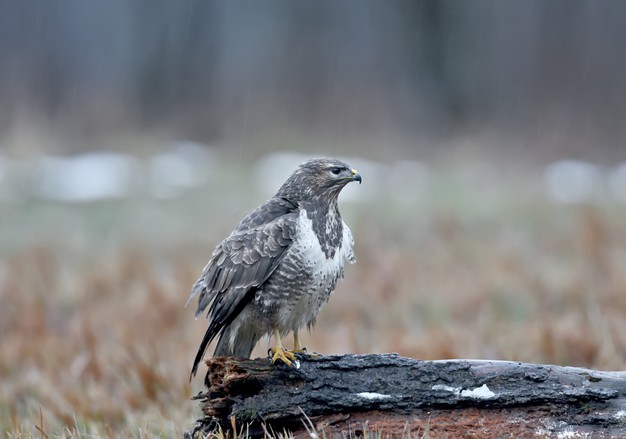The Accipitridae family of birds of prey includes the common buzzard (diurnal birds of prey). The common buzzard has 11 subspecies that may be found throughout Europe, Asia, and northern Africa. Hedgerows, woods, moorlands, and lowland farms are common habitats for common buzzards, although they may also be found in the highlands. Fortunately, it survived and recovered to become one of Europe’s most abundant and ubiquitous raptors.
Some interesting 10 facts about common buzzard
Buzzards may grow to be 16 to 23 inches long and weigh 0.94 to 3 pounds.
Buzzards can be entirely white, reddish-brown, or blackish-brown, with a variety of bright and dark patterns. The underside of the body is pale, the tips of the wings are black, and the tail is barred.
Buzzards have a large wingspan, a rounded head, a curved beak, a short neck and tail, and broad wings.

Buzzards have a wingspan of 4 to 5 feet and fly in a soaring, circular pattern. It is disliked in falconry due to its sluggishness and delayed learning (it takes a lot of time to learn to fly at the bait).
A carnivore, the common buzzard eats meat. Mice, voles, rats, rabbits, and different birds such as pheasants and puffins make up its food. It also eats worms and insects.
Eagles, foxes, and wildcats are natural enemies of the common buzzard.
Except during the mating season, which occurs between March and May, the common buzzard is a solitary bird.
To impress ladies, males twist and spin in the air while flying up and down. The “roller coaster” is the name given to this aerial dance.
Buzzards live in monogamous pairs for the rest of their lives. Each pair uses twigs and leaves to build a nest in a tree, generally near the forest’s border.
The female lays two to four eggs. The male does not take part in the egg incubation process, which takes 33 to 38 days.





